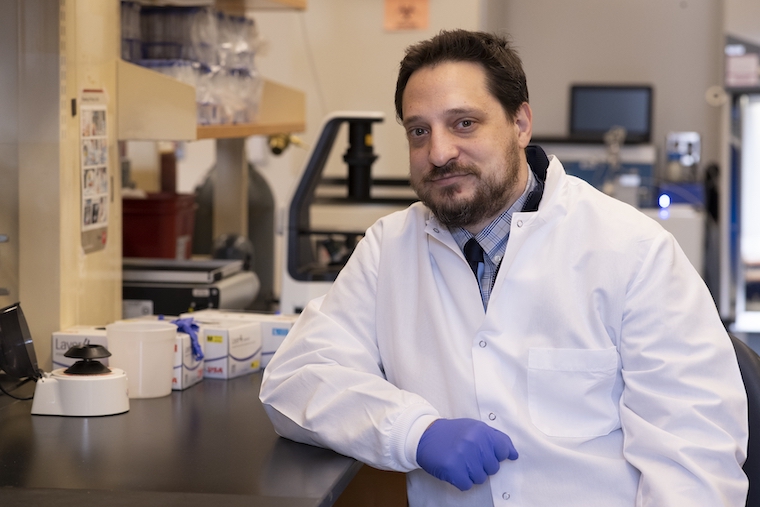Our Brad Gelfand, PhD, has identified an unexpected link between the two main forms of age-related macular dgeneration, the most common cause of blindness in people over 60, and his discovery could offer a way to stop the progression of the disease.
Gelfand, of our Center for Advanced Vision Science, found that the absence of a particular enzyme could drive both forms of age-related macular degeneration (AMD). We lose this important enzyme, called Dicer, with age, and that leads to an overgrowth of blood vessels in the retina and other damage, he and his colleagues discovered.
Gelfand initially identified the role of Dicer in the “dry” form of the disease, which is now untreatable. But he went on to confirm Dicer’s role in the “wet” form as well. “It was almost chance – we were like, ‘Why don’t we just go ahead and look for wet?’ When we first saw the results, I was very surprised,” he said. “Initially, it was equal parts excitement and disbelief.”
The discovery could lead to the first treatment for dry macular degeneration. It could also lead to better treatments for the wet form.
“As it stands, patients with [wet] AMD have to undergo frequent injections into their eye, which can be painful and comes with some risks. They have to come to the eye doctor once a month or every other month. A lot of these people can’t drive. So it’s a huge burden,” he told me. “The idea behind using gene therapy like the one we propose is that one treatment would last for a very long time. It’s a sustained therapy. So we can improve their vision and reduce the number of doctor’s visits they have to make.”
Developing a Dicer-based treatment will likely take several years, and that’s if all goes well. For now, though, Gelfand’s discovery has given us a better understanding of the relationship between the two forms of AMD. “It certainly solidifies the idea that wet and dry AMD share a lot of mechanisms,” he said. “It’s something that researchers today are still trying to grapple with – why might one person have wet AMD and one person have dry. Sometimes it’s the case that the same person has wet in one eye and the other eye has dry. Sometimes the same eye has both. This adds another important piece of evidence that the underlying mechanisms of these two processes are rrad eally tightly linked.”

Oh please hurry! Are there human trials?
Not yet. But he’s very mindful of the great need and working as fast as he can. In the meantime, you can see all your clinical trial options in the United States by visiting http://www.clinicaltrials.gov. That’s a database run by the federal government, and it’s a great resource.
I am very excited to read of this potential treatment. I was reared in the shadow of UVA (in Fluvanna County). My mother had AMD, a sister has it, and I was diagnosed with it in 2018. I played tennis twice a week until the end of 2018 when I could no longer follow the ball. Is there any possibility that if the trials prove out the efficacy of this enzyme, that vision could be improved in AMD patients? God Speed in your research. I want to get back to an active life.